|
Fiat BR.20
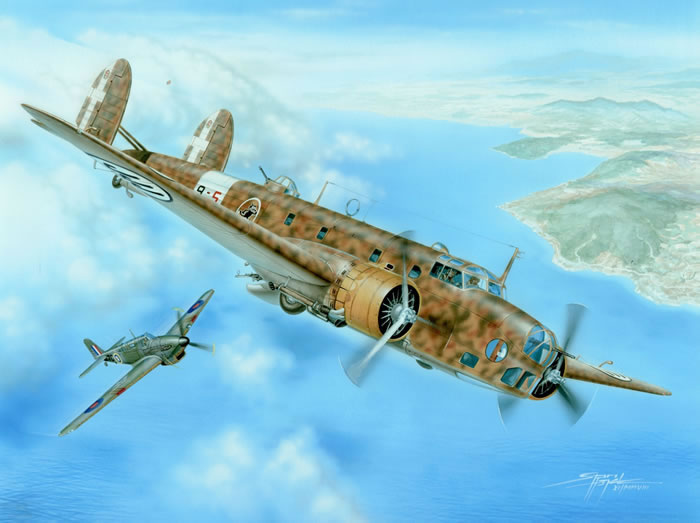
Classic Airframes, Special Hobby
1/48 scale
S
u m m a r y |
| Catalogue Number: |
Classic Airframes Kit No. 4131
Special Hobby Kit No. 48068 |
| Scale: |
1/48 |
| Contents and Media: |
Both kits - 117 parts in gray styrene, 53 parts in cream colored resin, 19 clear injection molded parts and 8 etched metal pieces. Instructions, decal sheet and painting guide. |
| Price: |
Classic Airframes MSRP USD$95.00 - Available at Sprue Brothers and Great Models Web Store / Special Hobby MSRP USD$94.95 – Available at Great Models Web Store |
| Review Type: |
FirstLook |
| Advantages: |
Very fine and well executed panel lines; detailed resin parts; restrained and nicely done fabric surfaces. |
| Disadvantages: |
There appear to be some fit issues; no etched metal seatbelts; lack of detail in certain areas. |
| Conclusion: |
Highly recommend even with its faults. A great big beautifully ugly Fiat BR. 20. |
Reviewed by
Steven Eisenman

Classic Airframes' 1/48 scale Fiat BR.20 will be available online from Squadron.com
In 1934, the Italian Air Ministry issued specifications for a twin-engine medium bomber as part of its efforts to modernize the Regia Aeronautica’s bomber forces. Fiat, along with a number of other Italian aviation companies entered the competition. In spite of Fiat’s entry coming closest in design to the specifications, no winner was declared. While Fiat received most of the orders, Caproni and Piaggio also received orders for their entries. But the ultimate winner was not a declared winner at all; that was the SM 79.
The Fiat contender was the BR. 20 “Cicogna” (“Stork”) designed by Celestino Rosatelli (BR = Bomber Rosatelli). To a certain extent, the BR. 20 was based on Rosatelli’s APR. 2, a nearly all metal passenger aircraft. The BR. 20 was a twin engine, low mounted cantilever wing aircraft with retractable landing gear. The BR.20 was constructed of metal framework with mixed metal and fabric covering. Unlike the APR. 2, the BR. 20 had twin tail fins and rudders.
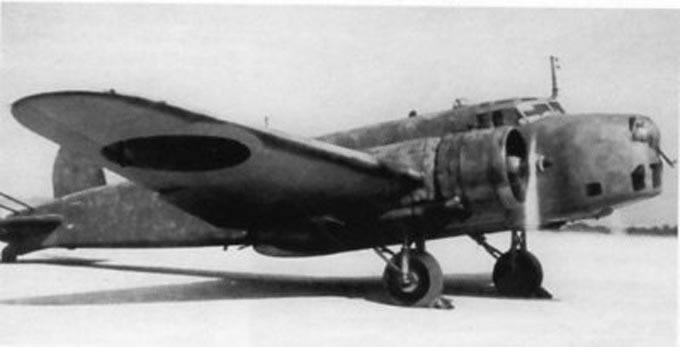
Although barely in service with the Regia Aeronatica in 1937, the Fiat BR. 20 was pressed into combat service with Spanish Nationalist forces in the Summer of 1937 to counter the growth of the Republican Air Force. It was in mostly in Spain that the BR. 20 was used in combat. The BR. 20 saw very limited combat with the RA during the Second World War, seeing service in the French campaign. But, by the autumn of 1940 it was phased out in favor of the revised BR. 20M. Some BR. 20s did wind up in the Balkans.
It was the newly introduced BR. 20M that was used by the Corpo Aero Italiano in the Battle of Britain. The BR. 20M was slightly redesigned with a more streamlined nose and longer fuselage. Most of the improvement had to do with crew protection and modified armament. It still used the same engines with performance little changed.
Even with its limited combat use, the Fiat BR. 20 attracted the attention of the Japanese. The Japanese, wanting to replace the aging Mitsubishi Type 93 (Ki-1), were looking for an interim bomber to use until the Mitsubishi Type 97 (Ki-21 - code name “Sally”) came into full production. The Japanese entered into a contract with Fiat for a total of 82 BR. 20s, which the Japanese designated Type I (for Italy) Model 100, and which the allies code named “Ruth”.
Besides Spain and Japan, there was one other air force that operated the BR. 20; that was Venezuela, which had purchased just one. Part of the purchase price was paid in coffee.
This new, injection molded BR. 20 represents another joint venture between MPM / Special Hobby and Classic Airframes to produce a kit that my have limited interest. Given its limited combat role and its “ugly” factor, it may have been a wise decision to share the cost and risks.
The only other 1/48 scale model of the BR. 20 that was produced was in resin from Alpha Flight.
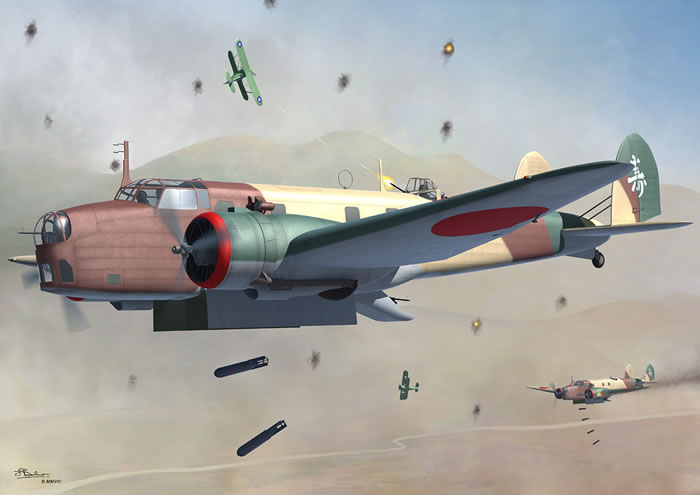
Classic Airframes Box Art
This new BR. 20 is a classic MPM/SH/CA molding done in gray plastic that is relatively free of flash, although there is a molding flaw on the left bomb bay hinge that needs to be cleaned up. Some injection molding stubs will need to be removed from the inside surfaces of several parts.
The most impressive part of the molding, as far as I am concerned, is the representation of the fabric surfaces. The fabric effect is visible, but very restrained and is quite in keeping with the fine panel lines. The mold makers deserve kudos for that.
The clear parts are just that, and dipping them in Future is left up to the modeler’s choice. However, be careful in handling them as they are fairly thin and seem to be a bit brittle. This is especially important in assembling the lower portion of the nose.
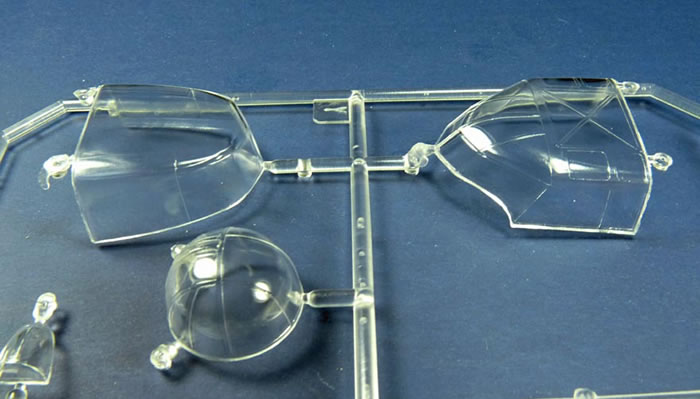
I saw in Kevin Martin’s very nice build, of an early production run of the kit, that there was a misalignment of the lower portion of the nose, which is a clear part, in relationship to the upper portion. It appeared the lower portion was narrower.
When I received my sample, one of the first things I did was to tape the fuselage and nose together and to test fit the lower clear part. I found that the clear nose portion in my kit was actually slightly wider, a bit flared out at the rear. My thought is that I will need to dip the clear part in Future and use slow set gel type cyanoacrylate glue to slowly attach the piece making sure the sides of the clear part align with the upper nose. This is a classic example of “test fit, test fit, test fit” in the case of limited run kits.
One thing you will notice is that the shape of the front of the nose clear part does not seem to match the upper portion. The clear part for the nose seems to come to vertical point, like the bow of a boat, while the bottom of the upper portion is concave and rounded across the front. This is not an error; the actual aircraft had this odd transition. So care should be taken in cleaning up this join. Don’t try to round off the clear part.
The interior of the model is a bit sparse and could benefit from some extra work. The instrument panel is injection molded and a central control console is in resin, they are nicely detailed. There are, however, no seat belts for the seats, nor any other etched metal parts for the interior. The seat belts on the BR. 20 appear to have been of the typical Italian combination of chains and belts.

The seats themselves are a bit odd. While they show the slightly bulged back, used to accommodate the parachute, they do not clearly represent the pipe frame construction of those used in the BR. 20.
The wheel wells are also bereft of any detail and are not boxed in. This could be the result of lack of information about the wells. I have not come across any photographs or drawings of the wheel wells.
Yes, you can make your own wheel well interiors, the sides at least, with some sheet plastic and plastic rod. The gear attaches to the inside of the top wing half nacelle. Then again, I’m not sure how many modelers display their models upside down.
The kit does provide a separate piece for the ventral gun “tub” or “jaw”. The theory, I presume, is that it can be positioned in the lowered position. But in actual practice, I have come across only one picture of the ventral gun “jaw” being in a lowered position while the aircraft was on the ground, and it appears the aircraft was being serviced.
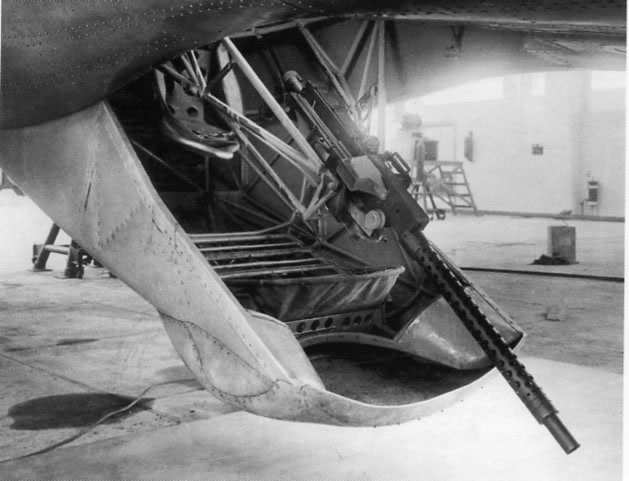
If you do want to pose the “jaw” in the open position, you will need to do a fair amount of scratch building to represent the seat, framework and gun mount, as there is no detail for this included in the kit.
With the “jaw” in the retracted position, you could take the “not to use” machine gun and show the barrel slightly sticking out of the small cut out at the back of the ventral gun. It protruded only slightly, not as much as shown in the drawings on the instruction sheet.
Speaking of accuracy, I scaled up the Ali D’Italia drawings to 1/48 scale, set wing and fuselage parts against drawing; the kit seems to be on the mark. But then again, are the drawings accurate? From what I have seen of the kit’s parts and Kevin’s finished model, it looks like a BR. 20 to me, slab sided and beautifully ugly.
As with nearly all limited run kits, there are no aligning pins on the mating surfaces. But unlike a number of other similar kits, such as the Baltimore, there seems to have been an attempt made to make for a secure attachment of the wings to the fuselage. This has been done with a set of plugs that pass through a bulkhead at the wing root and mate with openings in the fuselage.
The horizontal tail planes are just a butt attachment to the fuselage. But, the vertical fin and rudder do have alignment pins, which set in holes on the tail planes.
A small, etched metal set provides the control linkage for the rudders and trim tabs. Oddly the etched metal set are marked as 1/72, yet bear the kit number of 48068.
Looking at the instructions and the parts, construction seems straightforward and would proceed as with any other limited run kit, test fit first.
Markings
The decals for the Classic Airfrmaes kit are printed by Cartograph of Italy. Those for the Special Hobby kit are printed by AVIPRINT. All the decals are cleanly printed and in register. On first impression, the rudder stripes for the Special Hobby kit seem to lack depth of color, especially the green. I plan to mask and paint the red, white and green rudder stripes before attaching the tail fins to the model. I find that paint looks so much better than a decal, and the extra effort is worth it.
Classic Airframes kit - 4131
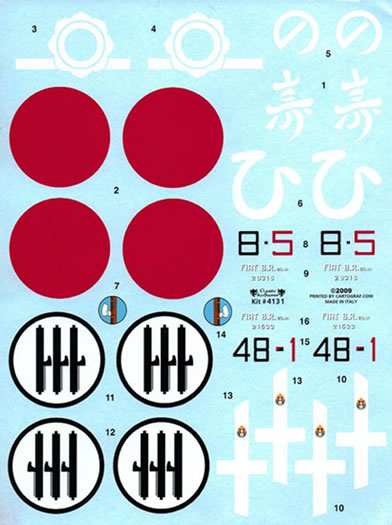 The Classic Airframes kit provides marking for four different aircraft – two Japanese and two Italian. But for one of the Japanese aircraft, there are different fin markings for three different units. The Classic Airframes kit provides marking for four different aircraft – two Japanese and two Italian. But for one of the Japanese aircraft, there are different fin markings for three different units.
Imperial Japanese Air Force: Yunchung, China, circa 1939. This aircraft is camouflaged in a yellow base with green and brown mottles. The FS callouts appear to represent Giallo Mimetico 3 (FS 33434), Verde Mimetico 2 (34092) and Marrone Mimetico 2 (CA uses 30078, where as it might be close to 30076). The underside is Grigio Azzurro Chiaro 1 (FS 36307).
Imperial Japanese Air Force: Handai, China, circa 1939. This aircraft is in broad bands of Giallo Mimetico 3, Verde Mimetico 2 and Marrone Mimetico 2. The underside is Grigio Azzurro Chiaro 1. There are three different fin markings for the aircraft in this scheme. The primary one is for an aircraft of the 12° Sentai 7° Hikodon, but I don’t know the Chutai. The other two are for the 3° Chutai, 12° Sentai, 7° Hikodon (the “U” shape marking) and the 1° Chutai, 98° Sentai, 7° Hikodon ( the “wreath” shape).
Regia Aeronautica: 8-5 of 8° Squadriglia BT, 25° Gruppo BT, 7 Stormo; Forli, circa 1941. This aircraft is portrayed in Giallo Mimetico 3 with Verde Mimetico 2 and Marrone Mimetico 2 mottles. The underside is Grigio Azzurro Chiaro 1. The aircraft has yellow cowling and a white fuselage band.
Regia Aeronautica: 48-1 of 48° Squadriglia BT, 37° Gruppo BT, 18° Stormo; Yugoslavia, circa 1941. The colors for this aircraft are Giallo Mimetico 3 with Verde Mimetico 2 mottles. The underside is Grigio Azzurro Chiaro 1. The aircraft has a white fuselage band.
Observations on the markings. The marking guide I have does not clearly show the upper surface camouflage extending over and under the leading edge of the wing. It should. Also, for the Japanese aircraft, the top surface colors that extend under the wing’s leading edge should have a large scallop where the Italian marking would have been placed (See the reference picture). The Hinomaru was placed further to the rear on the underside, such that it overlapped the aileron. Also, a note on the Giallo Mimetico color. It is possible that the Giallo on the banded aircraft was the lighter colored Giallo 3 (similar to a Middle Stone) while that on the mottled aircraft was the darker Giallo 4 (similar to a nut brown, with an FS approximation of 30266). I plan on using the Giallo 3 on banded aircraft and Giallo 4 on the mottled.
Special Hobby kit - 48068
The Special Hobby kit provides marking for four Italian aircraft. Three of these aircraft have the pre- and early war tri-color rudder stripes.
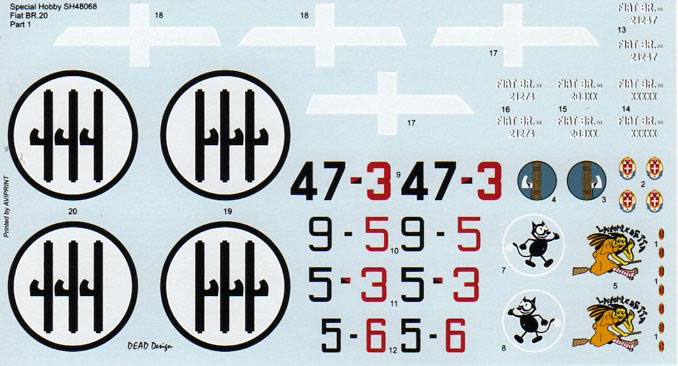
Regia Aeronautica: 9-5 of 9° Squadriglia, 25° Gruppo, 7° Stormo; Cameri, February 1941. This aircraft is portrayed as being in Giallo Mimetico 2 (FS 33481) with Verde Oliva Scuro 2 (FS 34052) and Marrone Mimetico 2 (FS 10076) mottles. The underside is in Grigio Mimetico (FS 36293). The aircraft is shown with a white fuselage band and yellow cowlings, which were painted late in its service life. It has the Felix the Cat unit emblem on the side of the fuselage. I have seen a picture that I believe is of this aircraft on the French Front in 1940. The only difference in markings is that in France it did not have the white fuselage band or yellow cowlings.
Regia Aeronautica: 5-3 of 5° Squadriglia, La Malledeta, circa 1940. This aircraft has the same camouflage scheme as 9-5 above. But, this aircraft has the pre- and early war rudder stripes and does not have a fuselage band. It has the witch on a broom unit emblem on the side of the fuselage.
Regia Aeronautica: 5-6 of 5° Squadriglia, 43° Gruppo, 13° Stormo, Lonate, 1936. This aircraft is in overall Aluminum lacquer and dope. It has the tricolor stripes not only on the rudders, but also on the elevators.
Regia Aeronautica: 47-3 of 47° Squadriglia, 37° Gruppo, 18° Stormo, Aviano, 1939. This aircraft is in the broad banding of Giallo Mimetico 3, Verde Mimetico 3 (FS 34102) and Bruno Mimetico 2 (FS 30215). The undersides are Grigio Mimetico (FS 36293). The rudders have the tri-color stripes.
Observations on the markings. I am not quite comfortable with the Special Hobby color callouts. I would use those used by Classic Airframes in conjunction with my observation for the CA markings. Also, as with the CA markings, the Special Hobby marking guide does not clearly show the upper surface camouflage wrapping over the leading edge.
I’m sure there are questions about whether there will be a boxing for the BR. 20 in Spanish Nationalist service and a version for the BR. 20M that was used in the Battle of Britain.
As for the Nationalist BR. 20, it would seem that based on Special Hobby’s past practices, we would hopefully see this kit issued with a new set of decals. As for the BR. 20M, it appears that the kit is designed to be the basis for the M. The kit is designed to accept a different nose and tail. The parts listing already shows parts that would be used on the M.
But the real issue is how I feel about this kit. Well, to throw gasoline on the fire, I’d highly recommend it. Even with its faults.
First of all, it is right up my ally for aircraft I love; an “ugly” aircraft that was not used by one of the big four air forces (i.e. USAAF, RAF, VVS or Luftwaffe) and saw very limited used by Japan. Even then, I find the Japanese markings on an Italian aircraft to be quite interesting. Also, unless Trumpeter bites the bullet, as it did with their SM 79, we will most likely, and in all probability, not see a BR. 20 from a mainstream manufacturer.
If one has any interest in modeling the Fiat BR. 20, one cannot go wrong with either kit. There is a great selection of markings. An Aluminum BR. 20 or a Japanese BR. 20 would make a very striking model for anyone’s collection.
References:
Fiat BR. 20; Ali D’Italia; Paolo Waldis and Ferdinando Pedriali; La Bancerella Aeronautico – Torino; 2006.
Fiat BR. 20M; Ali D’Italia, Paolo Waldis; La Bancerella Aeronautico – Torino; 2007.
Aircraft in Focus- Fiat BR.20; Pawel Babinski; Wydawnictwo Militaria; 1999.
Italian Civil and Military Aircraft 1930 – 1945, Jonathan W. Thompson; Aero Publishers, Inc.; 1963.
Photograph Note: The picture of the ventral gun is of the BR. 20M’s ventral gun. It is quite similar to the BR. 20, although the shape of the tub is slightly different. The one picture I have of the BR. 20’s ventral gun shows virtually no detail.
Thanks to Special Hobby for the sample
Review Text and Images Copyright © 2010 by Steven Eisenman
Page Created 28 January, 2010
Last updated
29 January, 2010
Back to HyperScale Main Page
Back to Reviews Page

|
